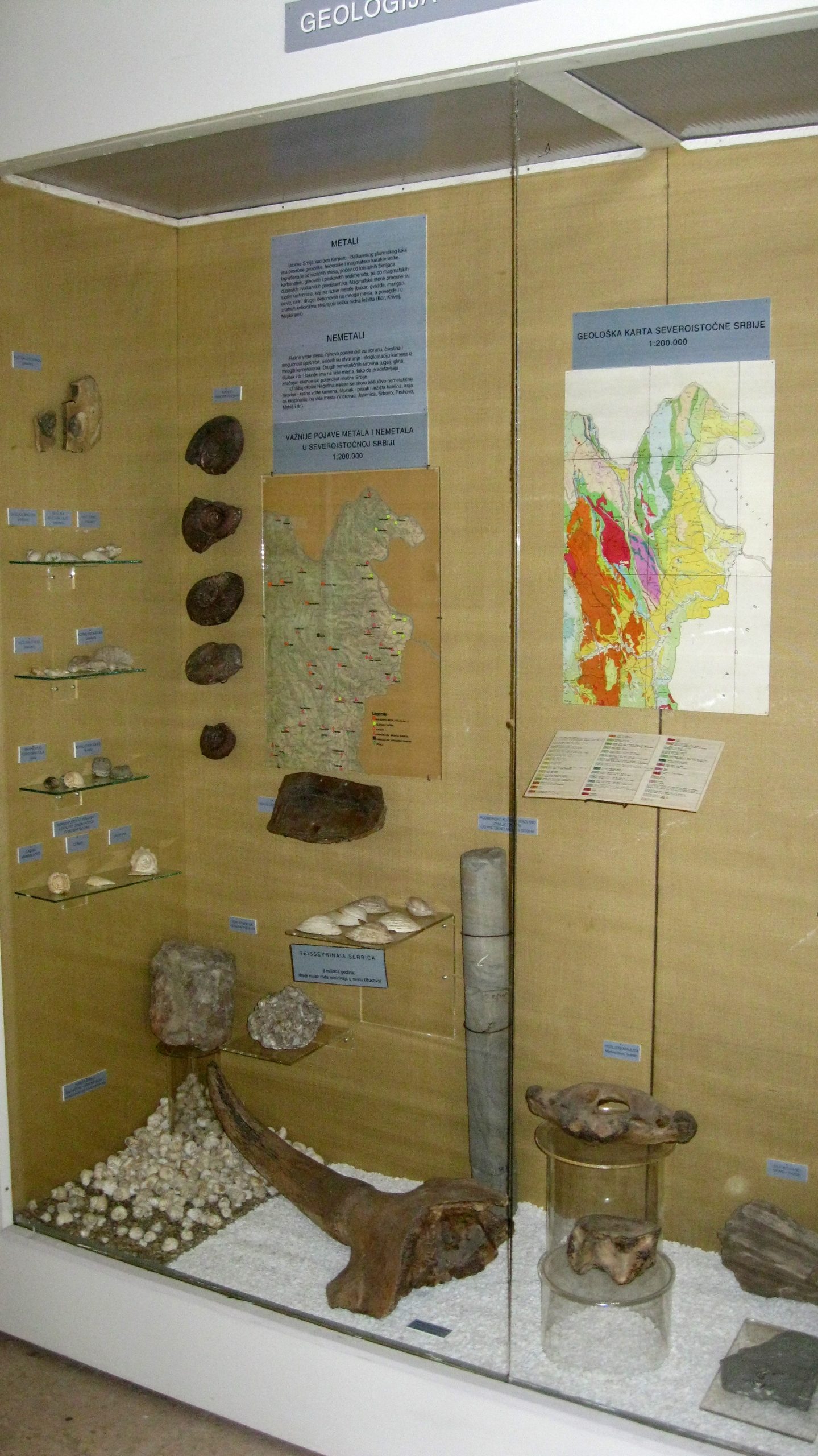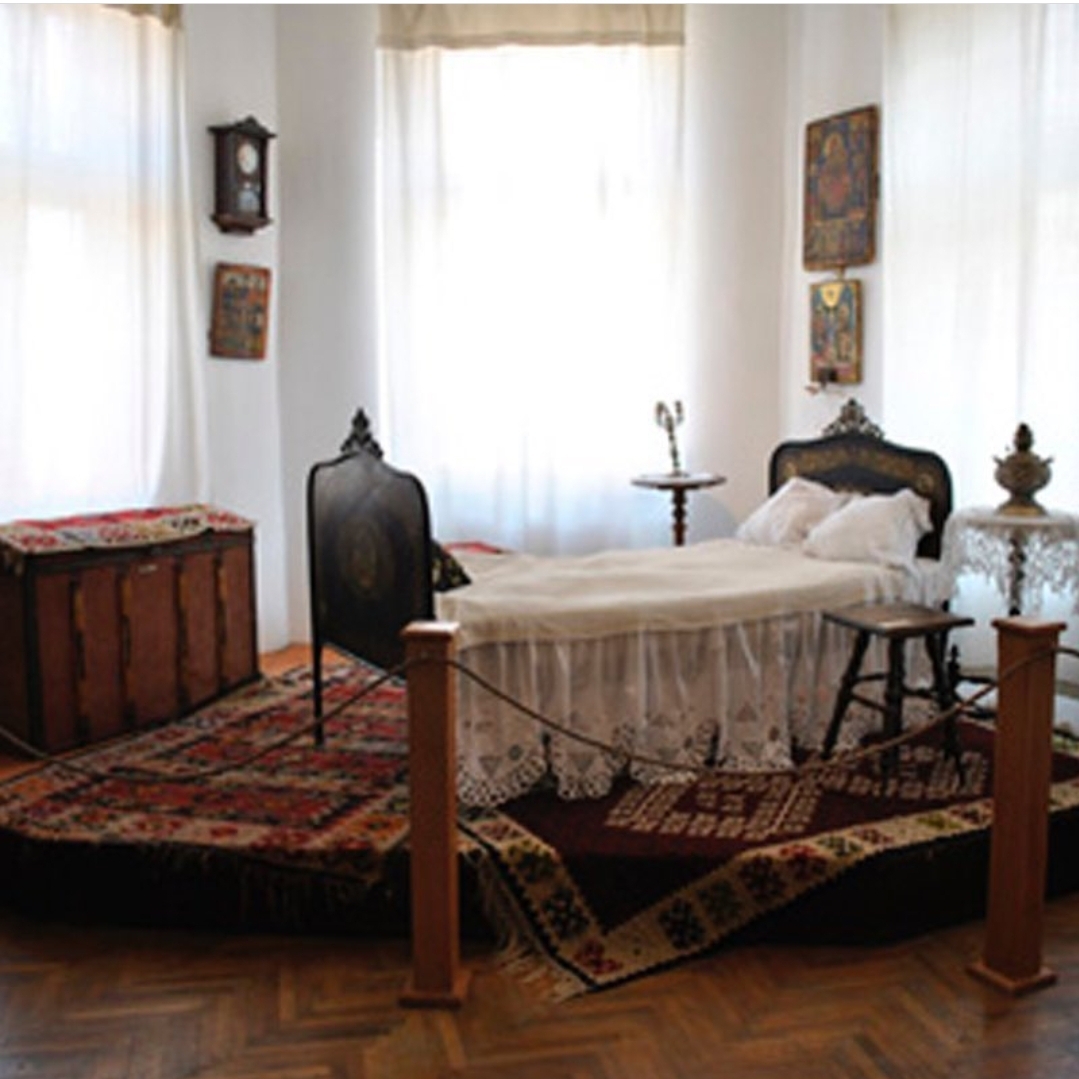Vere Radosavljevic br.1
Vere Radosavljevic br.1
For almost 90 years, the Museum of the Krajina has preserved evidence of the rich history and traditions of the Negotin Krajina. One of the first complex museums south of Belgrade faithfully portrays the complex historical events and personalities of this region – from the hero of the First Serbian Uprising Hajduk Veljko to the most important local composer Stevan Mokranjec. Under the auspices of the Museum are centuries-old spiritual and secular buildings as well as ancient sites that give a special historical value to the Negotin Region.

You are now standing in the Krajina Museum, founded in 1934 on the initiative of a group of citizens and by the decision of the Moravian Banovina based in Niš After Belgrade and Vojvodina region, this Museum is one of the oldest ones in Serbia. It is a museum of...

This showcase displays the geology and paleontology of the Negotin Krajina, including rock and mineral samples, as well as fossil remains of plants and animals found in rocks of Mesozoic and Cenozoic period There you can see the remains of fossilized wood, corals,brachiopods, shells, snails, cephalopods, fish and mammals

The most important Mesolithic sites discovered so far are concentrated along the right bank of the Iron Gates of the Danube gorge, as a group of settlements of semi-sedentary and sedentary hunter-gatherers and fishermen of the Lepenski Vir culture, during the 8th and 7th millennium BC

This showcase displays finds from the Neolithic, Eneolithic, Bronze and Iron Age periods

The last period of the Iron Age, which was also the final period of prehistory in Eastern Serbia, was marked by the dominance of the culture of the Celtic and Dacian population. Most of the Celtic finds from this region belong to the period of the 1st century BC and...

During the Roman period, the Danube coast with its hinterland, including the area between Peč, Timok and the Danube, formed a single entity with its specific requirements within the development of the Roman Empire

With coming of Diocletian at the head of the Roman Empire (285-305) began a new period of rule, called the Tetrarchy (reign of the four) It was a new attempt to restore the Empire, and our region is associated with the names of two emperors, Galerius (293–311) and Maximinus Daza...

As the new nations arrived from the north, this area and the Danube limes became the most important border of the empire. The Goths came, numerous and unstoppable, and, after the battle of Hadrianopolis and the death of Emperor Valens, they moved along the Danube, ravaging and plundering…

Today, it is most difficult for archaeologists to identify and investigate Slavic and early Serbian settlements. There are no monumental buildings and an abundance of archaeological material. It is about houses made of earth and wicker and material culture in a very modest selection Nevertheless, it was believed that right...

In the period from the 9th to the 11th century, the area of Negotinska Krajina and Ključ developed the so-called Lower Danube culture. During that period, the first Serbian states were created, on the way of the great Bulgarian expansion towards the west…

In order to present the most complete picture of the historical development of Negotin, portraits depicting citizens of various professions were selected. Portraits of: Knez Miloš Obrenović, Dimitrije Sečanski (lawyer), Petar Sečanski (priest) and Milutin Garašanin (Serbian politician, prime minister, president of the National Assembly and minister), works of Pavle...

Deriving from the fact that folk culture has been in the making for centuries and under different cultural influences, the ethnological exhibition consists of those topics that are the very core of the traditional culture of the Negotin Krajina: crafts, occupations, home decoration, customs and folk costumes
 etnologija gradska soba
etnologija gradska soba
Here you can see what a town house looked like back in the 19th century. In order to get the most complete image of the interior decoration, furniture for storing clothes, a chest for girls’ clothes, a metal bed furnished with straw, blankets and pillows are on display

This display case exhibits tools of lyciders, waxwork, breadmaker, furrier, traditional costume maker, cauldron maker and rope-maker craftsmen, as well as wooden objects for washing gold

Here in this showcase you can see parts of women’s urban costumes and accompanying details from the last decades of the 19th and the beginning of the 20th century. After 1833, the need for finer clothes made by artisans increased considerably. The stratum of merchants, artisans and clerks became more...

This display case holds exhibits related to the economic development of Krajina, the XIII Infantry Regiment and the socialist period. Here you can see the documents testifying to the development of political thought, military doctrine, and the influence of science and art on our region

World War I began as a conflict between the countries of the Central Powers and the Entente block. One and a half billion inhabitants from 36 countries were drawn into the war, 70 million of which were armed. Small Serbia made the biggest sacrifices…

This part of the historical exhibition refers to the Battle of Leget Field, which took place in 1914. The Battle of Leget Field took place on the territory of the Austro-Hungarian Monarchy, a country which had had pretensions of conquering the Kingdom of Serbia